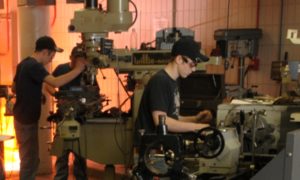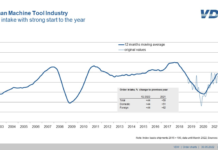 Finding the ideal toolholder it’s sometimes a very difficult task. Yet in many cases, machinists want to make adjustments in dimensions, quick-change tooling or other options to reduce set-up times and speed production of machined components. This can be as simple as extending the tool length so the path of travel to the workpiece is minimized to setting up all tools for quick change-outs.
Finding the ideal toolholder it’s sometimes a very difficult task. Yet in many cases, machinists want to make adjustments in dimensions, quick-change tooling or other options to reduce set-up times and speed production of machined components. This can be as simple as extending the tool length so the path of travel to the workpiece is minimized to setting up all tools for quick change-outs.
Inevitably this leads to long, exhaustive searches of catalogs or online forums. Failing to find what they need, some machinists purchase “blanks” and grind them down to meet the precise requirements of their operation. However, some manufacturers, particularly smaller, more nimble US-based operations, are willing to create specialty toolholders.
“Many of the larger manufacturers don’t want to spend time setting up a machine just to create five pieces,” explains Paul Gassman of Collis Toolholder, a company that manufactures and distributes over 4500 SKUs of toolholders. “And it is not just one machine – it might take 14 setups to make one part.”
For Stephee Thee of Vallen Industrial Distribution, when companies call or e-mail her for “specials” there are very few options available. “A lot of vendors come back with a ‘no-quote’ or an astronomical price.”
She says she has turned to Collis, who quotes at a reasonable price, for variations that include varying lengths and conversions, for example, a Morse taper either stepped or up reduced in size, a V-flange shank with a quick-change nose or an extended projection for deep hole drilling and tapping. According to Gassman, just about any toolholder can be produced based on special requirements or proprietary dimensions, in just about any combination of shank, collar, and collet.
Furthermore, just about any system can be converted into a quick-tool-change format. Adjustable adapter and tap extensions are also available. This can be a simple matter of mixing and matching options already in a catalogue. If an appropriate toolholder cannot be located, a replacement can be machined by those with the in-house capability utilizing CAD software that adjusts for varying projection lengths.
“You can basically combine any shank and holder together and extend the dimensions in any direction and our software program will recover all the dimensions on the tool so it isn’t like drawing everything from scratch,” says Gassman.
Quality US-based manufacturers also have more expertise achieving the precise tolerances for optimal fit and concentricity. By utilizing options with superior fit and better balance, more accurate work and better surface finishes can be achieved while extending the life of the equipment itself.
For all its tapered toolholders, Collis is known for exceeding the industry “AT” standards for precise fit in the spindle. These standards are a specification of ANSI/ASME standard (ASME B5.50-2009) and indicate the tolerances that must be met in relation to the taper angle. Collis uses one-half the allowable tolerance of this standard. For high speed machining above 10,000 RPM, the toolholder must also be balanced more precisely or vibration can occur, leading to out-of-tolerance parts. For these reasons, machine-tool spindles and machine-tool parts from Collis are usually are specified with vibration levels of G2.5, whereas others offer only G6.3.
Although the toolholders are custom manufactured, Gassman says this doesn’t have to mean long lead times.
“Machine operators don’t order a toolholder far in advance for a project. They are basically getting ready to run some parts and need the toolholder sooner, rather than later, so lead time is a factor,” adds Gassman, adding that Collis can deliver a custom machined toolholder in as little as two weeks.



